Your Planets
Portraits of the Planets
Aspects between Planets
The planetary ages
The planetary families
Planets in Signs
The Planets in comics


Ivan Pavlov (1849–1936) was a physician and specialist in animal physiology. He first focused on regulation before specializing in research on the physiology of the digestive glands, which earned him the Nobel Prize for Medicine in 1904 for his work in this field. One could not be further from psychology and its typologies. By taking up the nervous types defined by Pavlov and by postulating that planetary functions are equivalent to innate absolute reflexes and the annual diurnal-nocturnal variations of the zodiacal cycle at a pre-selection grid for conditional reflexes, also innate, we arrive at a rational definition of the Planet-Sign relationship, and at the formulation of a reflexological zodiac.
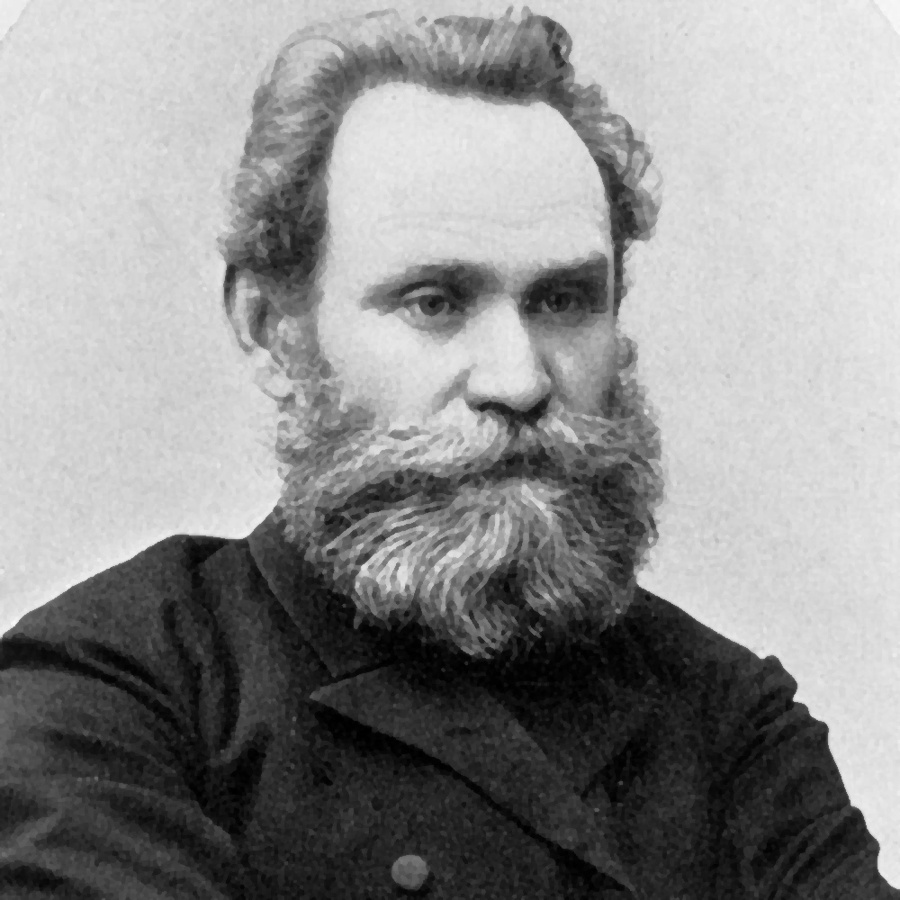 It was however by studying the role of the nervous system in the functioning of these glands by carrying out animal experiments (Pavlov was an immense experimenter who only theorized after having personally validated his hypotheses in the laboratory) that he was led to discover the existence of “conditional reflexes”, which he defines as follows: “We called the new reflexes conditional reflexes, as opposed to innate reflexes, which are absolute. These epithets are beginning to come into common usage. From an investigative point of view, these designations are fully justified. In comparison with the innate reflexes, they are really very conditional reflexes: first, they require for their formation the concurrence of determined conditions; secondly, they depend in their work on a large number of circumstances. The experimenter must consider a multitude of factors during their study. But, of course, our epithets can rightly be replaced by others. The old reflexes may be called innate reflexes, the new, acquired reflexes; the former can be called generic, because they belong to the species, the latter are individual and vary in different animals and even in one and the same animal, depending on time and circumstances. It is justified to call the former reflexes by conduction, the latter reflexes by circuitry.”
It was however by studying the role of the nervous system in the functioning of these glands by carrying out animal experiments (Pavlov was an immense experimenter who only theorized after having personally validated his hypotheses in the laboratory) that he was led to discover the existence of “conditional reflexes”, which he defines as follows: “We called the new reflexes conditional reflexes, as opposed to innate reflexes, which are absolute. These epithets are beginning to come into common usage. From an investigative point of view, these designations are fully justified. In comparison with the innate reflexes, they are really very conditional reflexes: first, they require for their formation the concurrence of determined conditions; secondly, they depend in their work on a large number of circumstances. The experimenter must consider a multitude of factors during their study. But, of course, our epithets can rightly be replaced by others. The old reflexes may be called innate reflexes, the new, acquired reflexes; the former can be called generic, because they belong to the species, the latter are individual and vary in different animals and even in one and the same animal, depending on time and circumstances. It is justified to call the former reflexes by conduction, the latter reflexes by circuitry.”
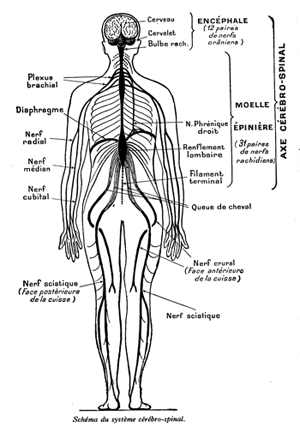 This discovery prompted him to deepen his knowledge — always in the same systematic experimental mode — on the“higher nervous activity”, which he considered to be the organism’s most perfected instrument of adaptation to the external world and as identical, in its nature, to psychological activity, which amounts to reducing the psychological to the neurophysiological. Unlike most philosophers and many scientists of his time, he refused that the objective explanations resulting from the experimental method cease to be valid as soon as one entered the field of so-called “psychological” phenomena. His long habit of animal experimentation was undoubtedly decisive in this positioning; he thus happened to come into conflict with some of his collaborators who suggested that he put himself “in the skin” of the animal to understand its reactions. To which he opposed a categorical refusal: there was no question for him of entering “into the internal state of the animal and of (himself) representing in (his) way his sensations, feelings and desires”. To this psychologizing and subjectivizing vision, he opposed his own, which he called “physiological” and which consisted in the search for external conditions, objective “exciters” or relations between “exciters” which gave rise to a particular type of physiological reaction. to identify and measure.
This discovery prompted him to deepen his knowledge — always in the same systematic experimental mode — on the“higher nervous activity”, which he considered to be the organism’s most perfected instrument of adaptation to the external world and as identical, in its nature, to psychological activity, which amounts to reducing the psychological to the neurophysiological. Unlike most philosophers and many scientists of his time, he refused that the objective explanations resulting from the experimental method cease to be valid as soon as one entered the field of so-called “psychological” phenomena. His long habit of animal experimentation was undoubtedly decisive in this positioning; he thus happened to come into conflict with some of his collaborators who suggested that he put himself “in the skin” of the animal to understand its reactions. To which he opposed a categorical refusal: there was no question for him of entering “into the internal state of the animal and of (himself) representing in (his) way his sensations, feelings and desires”. To this psychologizing and subjectivizing vision, he opposed his own, which he called “physiological” and which consisted in the search for external conditions, objective “exciters” or relations between “exciters” which gave rise to a particular type of physiological reaction. to identify and measure.
This radically objectivist and positivist position led him, from his rigorous experiments on dogs (which he only studied intact, refusing vivisection and narcosis), to discover the laws of operation of the superior nervous system of mammals, which he naturally ended up applying to humans, thus profoundly influencing the development of modern experimental neuropsychology, which he sums up in this sentence: “I recognize the efforts of thought made by psychologists ancient and modern, and I bow to them, but at the same time I am obliged to point out, and I doubt that anyone can contradict me, that their efforts are far from be economic, and I am convinced that the pure cerebral physiology of animals will not only facilitate extraordinarily, but that it will fertilize the gigantic and immense work accomplished by those who have devoted and devote their lives to the science of the subjective states of the male.”
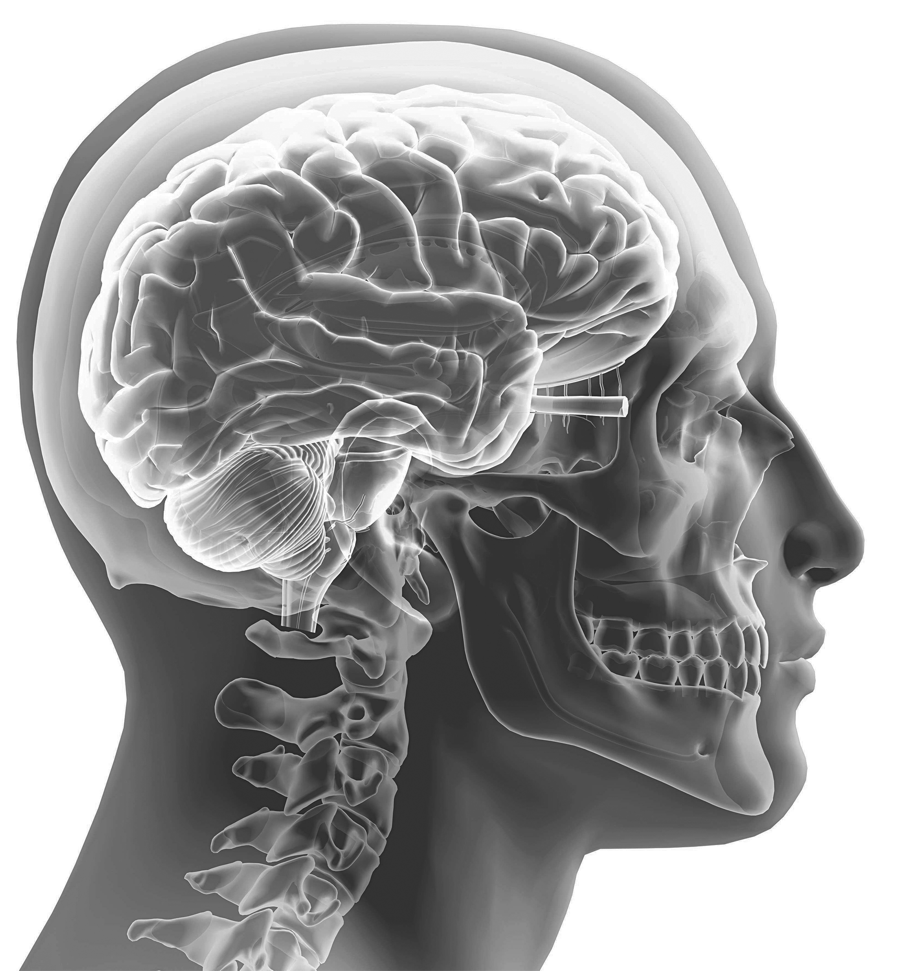 His conception of human neuropsychological functioning has often been misunderstood and caricatured. It is true that his assumed materialism and his refusal of any psychologistic discourse “humanist” could only rile the litterateurs, idealists, subjectivists and spiritualists. His research and discoveries on the processes at work in the higher nervous system having for the most part been the fruit of his animal experiments, he was accused of “animalize” human behavior, as if humans were not first and foremost animals, to which he replied, to make matters worse, that “the day when the objective study of a higher animal, the dog for example, will reach such a degree that the physiologist will be in a position to predict exactly the behavior of this animal in all possible circumstances, which will certainly take place, this then what will be left in favor of an existence distinct and autonomous from his subjective state, a state which exists in him just as well as in ourselves, although in a singular form? Will not the activity of every living being, including man, then have acquired in our eyes a character of indivisible unity?”, even adding that he was “convinced that an important step in human thought” approached, who would see “to really merge the physiological and the psychological, the objective and the subjective, and where the painful contradiction or the opposition between my body and my consciousness will find their concrete solution, unless they fall away by themselves.” Such remarks obviously do not come from a short-sighted positivist materialist (even if Pavlov was also that), but from a being passionate about the unity of the living. The most imbecile and ignorant of his critics even went so far as to suspect him of being a sly promoter of Marxist materialism, arguing that this Russian had refused to leave his native country after the Bolshevik revolution and that he was recognized there as a great scientist, even though his work had begun well before the arrival of the Soviets in power and he had not hesitated to condemn Bolshevism by declaring this sentence, which strikes at the corner of common sense, for the benefit of the Communist leaders animal experimentation: “For the kind of social experiment you’re doing, I wouldn’t sacrifice a frog’s hind legs.”
His conception of human neuropsychological functioning has often been misunderstood and caricatured. It is true that his assumed materialism and his refusal of any psychologistic discourse “humanist” could only rile the litterateurs, idealists, subjectivists and spiritualists. His research and discoveries on the processes at work in the higher nervous system having for the most part been the fruit of his animal experiments, he was accused of “animalize” human behavior, as if humans were not first and foremost animals, to which he replied, to make matters worse, that “the day when the objective study of a higher animal, the dog for example, will reach such a degree that the physiologist will be in a position to predict exactly the behavior of this animal in all possible circumstances, which will certainly take place, this then what will be left in favor of an existence distinct and autonomous from his subjective state, a state which exists in him just as well as in ourselves, although in a singular form? Will not the activity of every living being, including man, then have acquired in our eyes a character of indivisible unity?”, even adding that he was “convinced that an important step in human thought” approached, who would see “to really merge the physiological and the psychological, the objective and the subjective, and where the painful contradiction or the opposition between my body and my consciousness will find their concrete solution, unless they fall away by themselves.” Such remarks obviously do not come from a short-sighted positivist materialist (even if Pavlov was also that), but from a being passionate about the unity of the living. The most imbecile and ignorant of his critics even went so far as to suspect him of being a sly promoter of Marxist materialism, arguing that this Russian had refused to leave his native country after the Bolshevik revolution and that he was recognized there as a great scientist, even though his work had begun well before the arrival of the Soviets in power and he had not hesitated to condemn Bolshevism by declaring this sentence, which strikes at the corner of common sense, for the benefit of the Communist leaders animal experimentation: “For the kind of social experiment you’re doing, I wouldn’t sacrifice a frog’s hind legs.”
The “absolute reflexes” and the “conditioned reflexes” are the basis of Pavlovian neuropsychology: let us define them precisely, since it is through them that the correspondences between the Pavlovian typology and the planetary and zodiacal functions will operate.
● The absolute reflex is a neurophysiological mechanism inscribed in the body from birth that can be likened to an instinct, that is to say a spontaneous and unconscious reaction of the living body to ensure the maintenance of the biological conditions necessary for the life of animals and people. The most basic are the processes aimed at food ingestion (sucking, biting, chewing, stomach movements, etc.), oxygenation and blood circulation (inspiration, expiration, lung and heart movements) and reproduction. of the species (sexuality). Also part of these absolute reflexes are the alternation of activity and sleep as well as the reactions of attack and defense. These are the simplest behavioral responses to internal or external stimuli. They are characterized by their stability, their immutability, their immediacy and their absolute independence with regard to the subject who implements them. They are thus at the antipodes of the voluntary act.
● The conditional reflex is a significantly different behavioral response. Unlike the absolute reflex, of which it is a more sophisticated extension in the sense that it is susceptible to more varied responses, it can result from learning. This learning takes place in relation to an external stimulus that its association with an absolute stimulus (the one to which the absolute reflex instinctively reacts) makes significant for the organism. The most famous conditioned reflex is that carried out by Pavlov on dogs, immortalized by the expression “Pavlov’s dog”. During this experiment, which determined the subsequent course of all his research, the scientist established a link between a ringtone (the external stimulus) and the phenomenon of salivation (the absolute reflex), thanks to the regular and prolonged association of this stimulus. with the stimulant which usually produces this phenomenon (visual perception of meat). At the end of this conditioning process, he was able to make a dog salivate (absolute reflex) at the mere auditory perception of a sound associated with food, and therefore to convert an absolute reflex into a conditioned reflex.
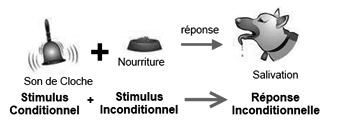
The conditional reflex can therefore be provoked by appropriate conditioning, and end up disappearing if the conditional stimulus (the ringing) is not regularly followed by the absolute stimulus (the meat). It therefore only exists as an extension of the absolute reflex, of which it is only a modality that is exercised according to the circumstances. Pavlov loved dogs, and it was thanks to them that he discovered the conditional reflex in the laboratory. But in general, animals are not locked up in laboratories where they are subjected to experiments. They live in their natural biotope where their absolute reflexes are also extended into conditional reflexes to ensure their survival, where their prey or their predators can signal themselves before being really perceived by the stimulants associated with them: leaf noises, tremors of the soil announcing the possibility of a nutritious or dangerous presence. Under these conditions, where does the innate end, where does the acquired begin? To what extent do conditioned reflexes rely on innate structural processes, “ready to use” associated with absolute reflexes, capable of great variability to become functional in order to adapt to circumstances? This is a question that Pavlov left hanging.
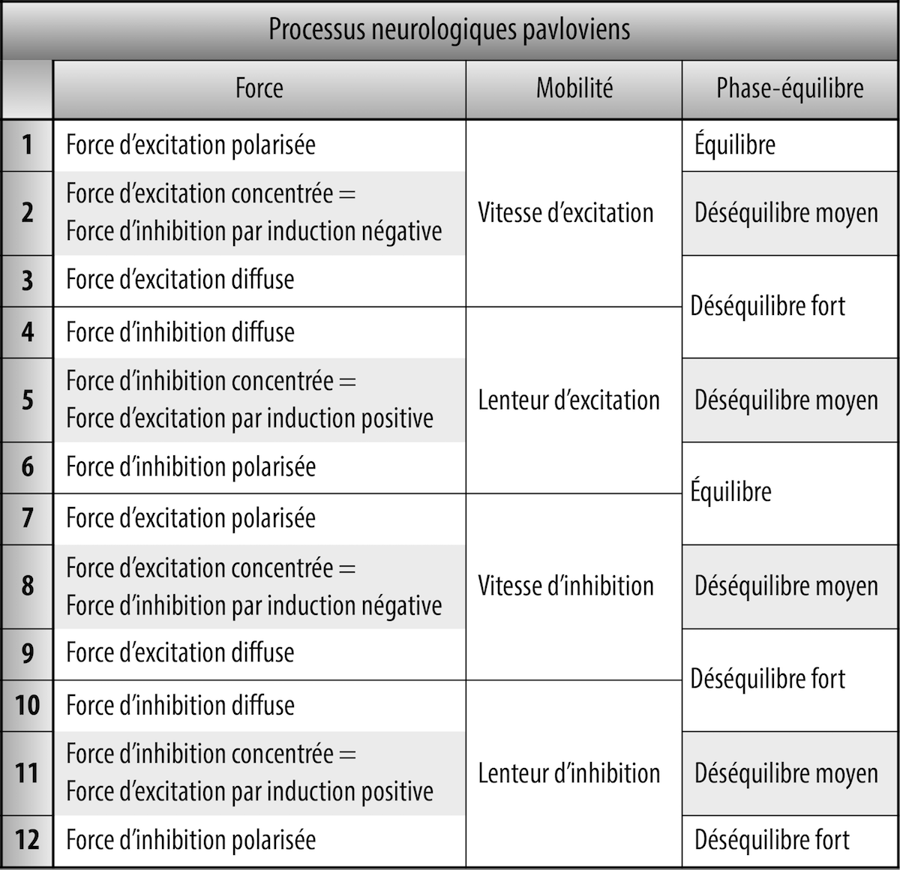
By gradually varying and sophisticated canine experiments, Pavlov discovered the fundamental processes of nervous activity that are the excitement (opening) and the inhibition (closure), which are characterized by their strength or their weakness, their mobility (fast or slow), their balance (equality, relative inequality, maximum inequality) and their power to negative induction (an excitation concentrated in a good dose on a specific positive exciter gives rise to a strong reaction of inhibition with regard to everything that does not concern this exciter) and positive induction (an inhibition concentrated in a good dose on a specific negative exciter gives rise to a strong reaction of excitation with regard to everything that does not concern this exciter), the process of induction meaning that an excitation can be transformed into inhibition, and vice versa. He also discovered that there were different types of excitation and inhibition.
These discoveries were not made in a day, and they were not guided by any previous theorization: for Pavlov, theory could only be an abstract (and necessary) result obtained thanks to the systematization of the products of experimentation. concrete.
It was therefore only gradually that the fact that these experimentally discovered processes of nervous activity could be formalized theoretically and thus lead to a typology became apparent to him. The beginnings were laborious, as befits the method by “trial and error” which is the hallmark of great experimenters. At the beginning, for example, he considered inhibition as a weakness, a mark of maladjustment. It is true that dogs reluctant to submit to its conditioning were to be considered more poorly than those who accepted it willingly. It was only many years later and after many other experiments that he would draw the theoretical conclusions from his work by imagining 24 “nervous types” the essence of which we will retain here, that is to say the beginning of a systematization of the combinations between the three basic processes. The following table shows only the “strengths” of these processes, i.e. the appropriate reactions they elicit.
And this is how we come to astrology. Indeed, taking the nervous types defined by Pavlov and postulating that planetary functions are equivalent to innate absolute reflexes and the annual diurnal-nocturnal variations of the zodiacal cycle at a pre-selection grid for conditional reflexes, also innate, we arrive at a rational definition of the Planet-Sign relationship, and at the formulation of a reflexological zodiac.

Pavlov indeed demonstrated that the increase in duration of a stimulant triggered a strong excitement (code F+) while its decay triggered a strong inhibition (F− code), while acting on the speed of these processes, given that an stimulator increasing in duration is more immediately available and therefore a source of reactive speed, whereas an exciting decreasing in duration is less so and therefore a source of reactive slowness. He also demonstrated that the speed or slowness of reactions affected both excitation and inhibition (Q+ and Q− codes for the excitation Quickness and the inhibition Quickness, Sl+ and Sl− for the excitation Slowness and the inhibition Slowness). Knowing that the adapted response to an event generally consists in reacting to its dominant characteristics and by transposing this fact to the adaptation of the species to variations in diurnal-nocturnal durations, each of these processes can be considered from its angle of adapted reflex (neurological reaction to the dominant arc in duration) or unsuitable (neurological reaction to arc non-dominant in duration). Finally, he distinguished different variants of excitation and inhibition whose names you will find in the tables devoted to the reflexological zodiac.
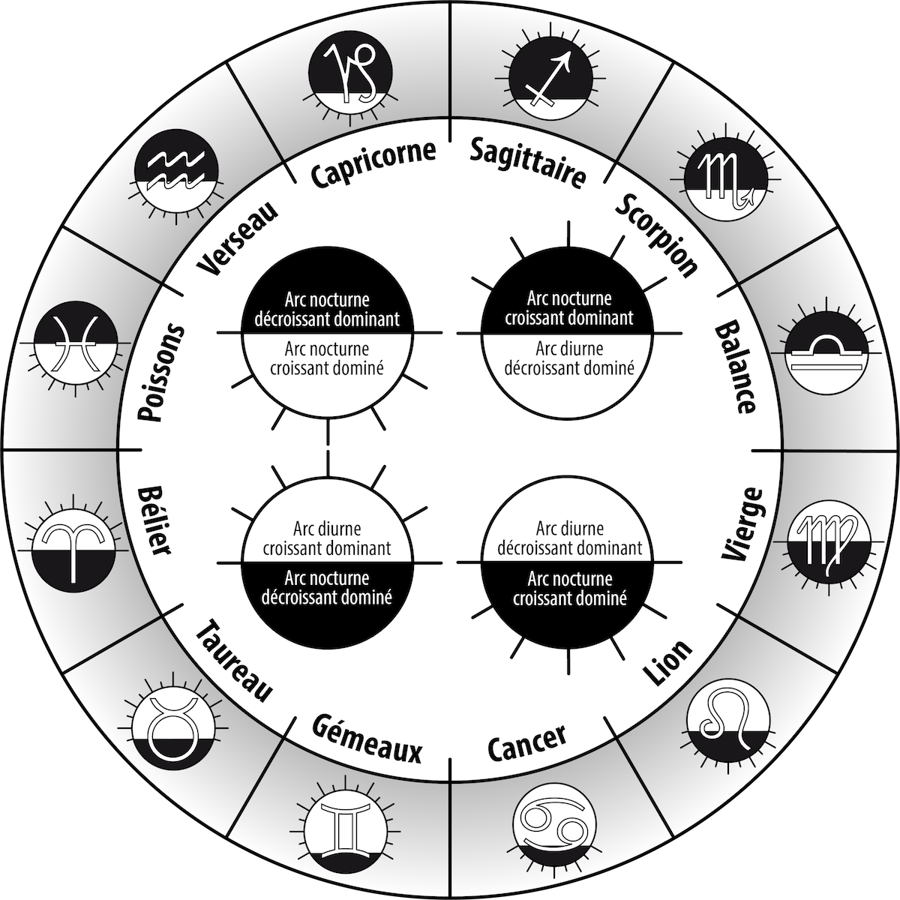
Correlations between “typology” Pavlovian and the conditionalist conception of the zodiac are obvious and totally assumed. It is not so much a question of borrowing from a typology outside of astrology. First of all, because Pavlov’s description of the fundamental mechanisms of nervous activity is wrongly described as “typology”. It is not a model invented from scratch, an artificial reading grid applied to human functioning to decipher it, it is about objective neurophysiological facts that can be measured by instruments other than personality questionnaires, and Pavlov’s dogs behind this discovery, not this invention, would have had trouble filling them! If one has, like conditionalist astrology, a neurophysiological conception of the zodiaco-planetary influences on the human receiver, one cannot help but use the Pavlovian terminology.
To clearly differentiate the planetary influence from the zodiacal influence, let us specify that:
▶ planetary functions can be considered as absolute thrills acting on the various levels (high, medium, low) of nervous system excitability.
▶ the zodiacal functions can be considered as innate conditional stimulants and concern the nature, mobility and balance of the different levels of excitability.
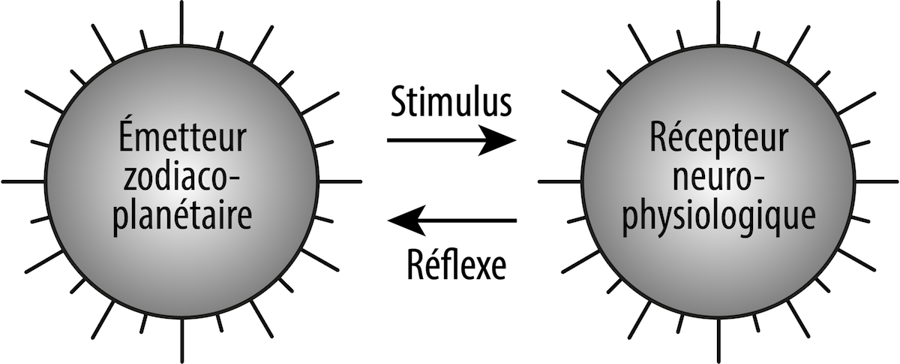
The planetary influence concerns the structures of being, which manifest themselves, through the intermediary of the zodiac, in the form of reflexes, reflexes which are conditioned by the declinations and diurnal-nocturnal durations. A conditioned reflex is “the connection that is established between a conditional stimulus and a particular behavior, which is a response of the living being and is acquired during learning.” However, neurophysiology has taught us that “sockets are provided (in the body) for all possible plugs, for all structures likely to come from outside” (Henry. Laborit). The zodiacal rhythms are indeed a structure coming from outside… a “form”, keeping this analogy perhaps a little too electro-mechanical. And the “plug” internal, specific to the human being, is the reflexological-noological zodiac.
Planets and Signs therefore model human behavior through the intermediary of the higher nervous system, the influence of the latter being subordinate to that of the former. Based on the findings of Pavlov, let’s describe what the dominant processes of nervous activity are and their relationship to zodiacal rhythms (you will find the astronomical foundations of the zodiac in this article).
There are therefore two zodiacs: one is external (that of declinations and its local photoperiod variants) and the other internal: the reflexological zodiac, specific to the human receiver. And in the first place, we observe two basic reactions: excitation and inhibition.
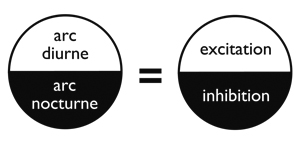
excitement (motive) is a state of openness and acceptance that encourages a positive response to external solicitations, from vague acquiescence to outbursts of enthusiasm. Power of “yes” : we give, we add. Its negative is the lack of inhibition: impotence of the “no”, difficulty in closing, slowing down, subtracting and retrenching.
Inhibition (brake) is a state of closure and refusal that encourages a negative response to external solicitations, from a softly defensive attitude to a categorical refusal to participate. Power of “no” : we subtract, we subtract. Its negative is the lack of excitement: impotence of the “yes”, difficulty opening, starting, giving and adding.
For the human species the day triggers reflexes of activity, animation, excitation, and at night reflexes of rest, sleep, inhibition. As for the planets, they act on us in a more “opened” (excitation) when they are above the horizon (diurnal arc), than when they are below (night arc) the horizon: the Earth, shielding their influence, has an effect “inhibitor”. From where:
▶ the diurnal arc is assimilated to a positive stimulus (code +), source of excitation reflexes (say yes, open, accept, add).
▶ the night arc is assimilated to a negative stimulus (code −), source of inhibition reflexes (say no, close, refuse, withdraw).
▶
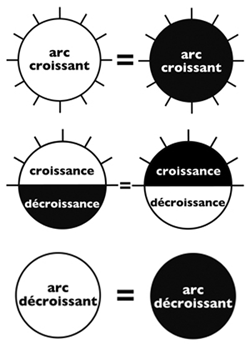 there arch growth (code +), in connection with the diffusion, the expansion of the diurnal or nocturnal process, activates and stimulates the reactions and induces reflexes marked by great mobility.
there arch growth (code +), in connection with the diffusion, the expansion of the diurnal or nocturnal process, activates and stimulates the reactions and induces reflexes marked by great mobility.
▶ there arc decrease (code −), in connection with the concentration, the regression of the diurnal or nocturnal process, slows down and measures the reactions and induces reflexes marked by great persistence.
When the duration of a diurnal or nocturnal arc is greater than twelve hours, the responses are said to be strong, adapted (code ‘F’). When this same duration is less than twelve hours, the responses are said to be weak, unsuitable (code ‘f’). We will see later what is the meaning of these notions of adaptation and maladjustment.
When the duration of a dominant arc in duration is increasing, it is the source of strong excitation reactions (code ‘F+’). When the duration of a dominant arc is decreasing, it is the source of strong inhibition reactions (code ‘F−’). Dialectically, Excitation Strength (‘F+’) implies weak inhibition (code ‘f−’), and Inhibition Strength (‘F−’) implies weak excitation (code ‘f+’).
▶ From 0° Capricorn to 0° Cancer, the diurnal arc increases and the night arc decreases.
▶ From 0° Capricorn to 0° Aries (Winter), the descending night arc has a duration greater than 12 h.
▶ From 0° Aries to 0° Cancer (Spring), the increasing diurnal arc dominates in duration.
▶ From 0° Cancer to 0° Capricorn, the nocturnal arc increases and the diurnal arc decreases.
▶ From 0° Cancer to 0° Libra (Summer), the decreasing diurnal arc has a duration greater than 12 h.
▶ From 0° Libra to 0° Capricorn (Autumn), the increasing nocturnal arc dominates in duration.
Hence the seasonal reflexology formulas:
Spring quarter (Aries, Taurus, Gemini)
▶ Excitation Strength (code S+), inhibition weakness (code w−)
Summer quarter (Cancer, Leo, Virgo)
▶ Inhibition Strength (code S−), excitation weakness (code w+)
Autumn quarter (Libra, Scorpio, Sagittarius)
▶ Excitation Strength (code S+), inhibition weakness (code w−)
Winter quarter (Capricorn, Aquarius, Pisces)
▶ Inhibition Strength (code S−), excitation weakness (code w+)
Excitation and inhibition are characterized by their mobility: speed or slowness.
Excitation quickness (mobile excitation): the engine starts warm, quarter turn. The “yes”, the openness, the gift are immediate: react spontaneously, improvise. In negative, maladjusted inhibition slowness : difficulty remaining inert, indifferent or tending to be so in a discordant or inappropriate way.
Excitation slowness (persistent excitation): the engine starts gradually. The “yes”, the opening, the gift are controlled, mastered: careful advance, organization. In negative, maladjusted inhibition quickness : difficulty in retracting quickly, in dodging, or tendency to do so in a discordant or inopportune manner.
Inhibition quickness (mobile inhibition): the brake stroke is sharp. The “no”, closure, subtraction are immediate: the art of dodging, flexible tactical refusals. In negative, maladjusted excitation slowness : difficulty in being persistent, systematic, or tendency to be so in a discordant or inappropriate way.
Inhibition slowness (persistent inhibition): the braking is progressive, prolonged. The “no”, closure, subtraction are controlled, mastered: remain unmoved, persist in obstinate refusals. In negative, maladjusted excitation quickness : difficulty in being spontaneous, in improvising, or tendency to be so in a discordant or inopportune way.
We noted above that the growth of an arc (diffusion of the process) was a factor of mobility (ability to modify attitude according to the new information which is diffused), and that its decrease (concentration of the process) was a factor of persistence (demobilization, withdrawal, persistence, perseverance).
Astrology conditionalist gave the mobility of attitudes implied by growth the name Speed (code ‘Q’), and Slowness (code ‘Sl’) to the persistence of attitudes implied by degrowth. Speed or Slowness are said adapted when the increasing or decreasing arc has a duration greater than 12 h (codes ‘V’ and ‘L’), unsuitable or missing (codes ‘v’ and ‘l’) in the opposite case.
▶ From 0° Aries to 0° Libra (Spring-Summer), the duration of the diurnal arc, successively increasing and decreasing, is greater than 12 h.
▶ From 0° Libra to 0° Aries (Autumn-Winter), the duration of the nocturnal arc, successively increasing and decreasing, is greater than 12 hours.
Hence the seasonal reflexology formulas:
Spring Signs (Aries, Taurus, Gemini) : adjusted excitation Quickness (Q+), maladjusted inhibition slowness (sl−, inhibition inertia)
Summer Signs (Cancer, Leo, Virgo) : adjusted excitation Slowness (Sl+), maladjusted inhibition quickness (q−, inhibition lability)
Autumn Signs (Libra, Scorpio, Sagittarius) : adjusted inhibition Quickness (Q−), maladjusted excitation slowness (sl+, excitation inertia)
Winter Signs (Capricorn, Aquarius, Pisces) : adjusted inhibition Slowness (Sl−), maladjusted excitation quickness (q+, excitation lability)
Each season therefore has its dominant formula in duration, inducing strong responses and adapted behaviors, and its non-dominant formula in duration, inciting weak responses and inappropriate behaviors. You have probably also noticed that the seasons are dialectical: what is strong in winter is weak in spring, and vice versa; what is strong in summer is weak in autumn, and vice versa.

Excitation and inhibition are finally characterized by their balance or imbalance.
▶ total balance between excitation and inhibition: we open or close in time;
▶ relative imbalance between excitation and inhibition: one of the two processes significantly dominates the other. You have to know how to balance openings and closings;
▶ maximum imbalance between excitation and inhibition: one of the two processes absolutely dominates the other: systematic behaviors of opening or closing.
Within each season, each Sign is characterized by a ratio of diurnal-nocturnal durations which is specific to it. These are the three phases (equinoctial, intermediate and solstitial) of the zodiacal rhythm.
Aries, Virgo, Libra, Pisces: the diurnal durations are substantially equal to the nocturnal durations: the reflexes of excitation and inhibition, of opening and closing share equally the reflexological universe, which induces the Sense of opposites and the Egalitarian phase.
The table below gives you the longitudes, the declinations and the durations of the diurnal and nocturnal arcs expressed in percentages (calculated for the 15° of each Sign and for a latitude of 45° North) for the four equinoctial Signs.
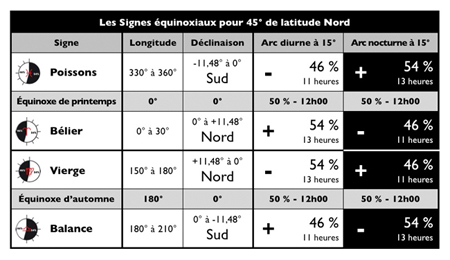
Sense of opposites: if the individual reacts in an appropriate way, he has the Sense of opposites (code SO) ; he perceives the concrete characteristics of this diurnal-nocturnal polarity. Day is not night, white is not black, presence is not absence, truth is not false, good is not evil, pros n is not against, the friend is not the enemy, yours is not mine, the beautiful is not the ugly, the allowed is not the forbidden, in short, one thing is not is not its opposite: the Subject knows how to make opportune, judicious, profitable choices, in tune with the real alternatives offered by the event, the being or the present situation with which he is confronted.
Egalitarian phase: if the individual reacts in an inappropriate way, he is in Egalitarian phase (code EP) ; he perceives the abstract characteristics of the diurnal-nocturnal polarity. The day is worth the night, the white is worth the black, the presence is worth the absence, the true is worth the false, the good is worth the evil, the pros are worth the cons, the friend is worth the enemy, yours is worth mine, the beautiful is worth the ugly, the permitted is worth the forbidden, in short, a thing has the same value as its opposite: the individual is thus subject to inopportune refusals to choose, out of phase with the event, being or the present situation with which he is confronted. Prisoner of his dilemmas, he ends up making hazardous, unilateral, unnecessarily annoying choices, with generally negative consequences.
Each of the four equinoctial signs expresses the Sense of opposites and the Egalitarian phase according to its specific terms. This quartet can be divided into two duets, characterized by the dynamics of showdown or of separation opposites. The dynamic of confrontation, which creates Clash of opposites, concerns the duo-duel Virgo-Pisces, where the diurnal and nocturnal durations tend more and more to equalize until the 0° equinoctial which marks their perfect equality. The dynamic of separation, creating Denouement of opposites, concerns the Aries-Libra duo-duel where the difference between the diurnal and nocturnal durations, while remaining minimal, tends to increase.
Clash of opposites: the contrasts between day and night, white and black, presence and absence, right and wrong, good and bad, pro and con, friend and foe, yours and mine, the beautiful and the ugly, the allowed and the forbidden, in short between a thing and its opposite, are perceived as ever more acute, traumatizing, violent, definitive. In both adapted and unadapted mode, the Clash of opposites results in reactions of over-protection (Virgo) and over-indifference (Pisces).
Denouement of opposites: the contrasts between day and night, white and black, presence and absence, right and wrong, good and bad, pro and con, friend and foe, yours and mine, the beautiful and the ugly, the allowed and the forbidden, in short between a thing and its opposite, are perceived as assumed differences implying necessary separations. In both adapted and unadapted mode, the Denouement of opposites results in reactions of over-opposition (Aries) and over-complementarity (Libra).
Taurus, Leo, Scorpio, Aquarius: the diurnal and nocturnal durations have an average difference: one of the reflexes of excitation (opening) or inhibition (closing) substantially predominates over the other in the reflexological universe, which induces the Sense of proportions and the Paradoxical phase.
The table below gives you the longitudes, the declinations and the durations of the diurnal and nocturnal arcs expressed in percentages (calculated for the 15° of each Sign and for a latitude of 45° North) for the four intermediate Signs.
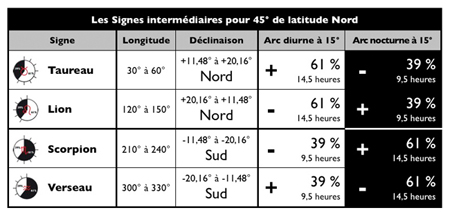
Sense of proportions: If the individual reacts in an appropriate way, he has the Sense of proportions (code SP) : he perceives the concrete characteristics of this proportion. There is more day than night, a lot of white and a little black, more presence than absence, a lot of truth and a little of falsehood, more good than bad, a lot of pros and a little of against, more friendship than enmity, a lot of yours and a bit of mine, more beautiful than ugly, a lot of permission and a bit of prohibition (and vice versa for all these dualities), in short a majority pole dominates another minority and the dominated element is strong enough not to be able to be excluded. The individual therefore knows how to dose the opposites, combine the dualities, deal with the antagonisms, spare the goat and the cabbage, make small or large concessions and compromises in order to maintain his control over the event, the being or the present situation. with which he is confronted.
Paradoxical phase: If the individual reacts inappropriately, then he is in Paradoxical phase (code PP) : he perceives the abstract characteristics of what he considers to be a disproportion, an imbalance. There is too much day and not enough night, too much white and not enough black, too much presence and not enough absence, too much truth and not enough falsehood, too much good and not enough evil, too pros and not enough cons, too much friendship and not enough enmity, too much of yours and not enough of mine, too much beauty and not enough ugliness, too many permits and not enough prohibitions (and vice versa). versa), in short, he perceives that a dominant pole exercises an abusive domination to the detriment of a minority pole. This leads the Subject to react strongly to weak signals and/or weakly to strong signals, to minimize or overvalue, to make a mountain out of nothing and vice versa, to respond disproportionately, excessively or insufficiently, to the event, being or the present situation with which he is confronted.
Gemini, Cancer, Sagittarius, Capricorn: the diurnal and nocturnal durations have a maximum difference: one of the reflexes of excitation (opening) or inhibition (closing) is clearly preponderant in the reflexological universe, the other being reduced to the bare minimum, which induces the Sense of syntheses and the Ultraparadoxical phase.
The table below gives you the longitudes, the declinations and the durations of the diurnal and nocturnal arcs expressed in percentages (calculated for the 15° of each Sign and for a latitude of 45° North) for the four solstice Signs.
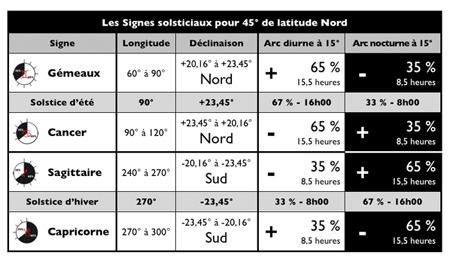
Sense of syntheses: if the individual reacts in an appropriate way, he has the Sense of syntheses (code SS) : he perceives the concrete characteristics of this preponderance of which the majority pole constitutes for him the general, unavoidable rule and the minority pole the particular exception so minimal that it is negligible. In this perspective, without being denied, the distinctions between the antagonistic elements that are day and night, white and black, presence and absence, true and false, good and evil, pros and the opposite, friendship and enmity, yours and mine, the beautiful than the ugly, the permitted forbids are abolished, exceeded, reabsorbed, merged into a totalizing synthesis piloted by the preponderant pole. Confronted with an event, a being or a situation that requires him to make clear choices, he prefers from the outset to seek solutions likely to federate the apparent antagonisms by integrating them into his own dynamic synthesis.
Ultraparadoxical phase: if the individual reacts in an unsuitable way to this phenomenon, then he is in Ultraparadoxical phase (code UP) : he perceives the abstract characteristics of this preponderance whose majority pole tends to deny the reality and the existence of the minority pole, which leads to a negation of concrete antagonisms and a lack of differentiation between normally opposed elements. For him all day is night, all white is black, all presence is absence, all truth is false, all good is bad, all pro is against, all friendship is enmity, all yours is mine, everything beautiful is ugly, everything permitted is forbidden, and vice versa: everything forbidden is permitted, everything ugly is beautiful, everything mine is yours, etc. The subject is thus led to confused syntheses that mix everything and its opposite, to abusive generalizations, to ambivalent behaviors, to illogicalities and to phenomena of control by non-differentiation between the self and the non-self (the other).
Each of the four Solstitial Signs expresses the Sense of syntheses and the Ultraparadoxical phase according to its specific terms. This quartet can be divided into two duets, characterized by the dynamics of diffusion or fusion of the sets. The dynamics of Diffusion of sets concerns the Gemini-Sagittarius duo-duel, where the difference between the dominant arc and the non-dominant arc in duration tends to increase up to 0° solstitial which marks their maximum inequality. The dynamics of Merging sets concerns the Cancer-Capricorn duo-duel where the difference between the dominant arc and the non-dominant arc in duration tends to decrease from the 0° solstitial which marks their maximum inequality.
Distribution of sets: the diurnal or nocturnal arc dominant in duration seems destined to grow indefinitely, until the possible total disappearance of the non-dominant arc… which will not occur, since at the precise moment of the solstice, the non-dominant arc will become increasing and the dominant decreasing. But, structure effect, the Gemini or Sagittarius Subject is not supposed to know it. He therefore tends to construct increasingly totalizing syntheses, in a sort of hubris of all-out fusion that does not shrink from any contradiction. In both adapted and unadapted mode, the Diffusion of sets results in reactions of over-heteroclism (Gemini) and over-universalism (Sagittarius). It is the reign of “everything and the rest”.
Merging sets: the diurnal or nocturnal arc, whose duration is clearly preponderant, decreases from the moment of the solstice, while the non-dominant arc has an increasing duration which cannot be ignored. Effect of structure, the Cancer or Capricorn Subject cannot fail to know it: the sets that he perceives and the syntheses that he conceives are closed totalities of which it is necessary to consolidate and preserve the problematic internal coherence while systematically eliminating the elements perceived as foreign. In both adapted and unadapted mode, the Merging sets results in reactions of compiler over-gathering (Cancer) and fixed over-structuring (Capricorn). It is the reign of “all that remains”.
An average concentration of an excitation or inhibition process causes the appearance of the opposite process. There are two types of induction, positive induction and negative induction. Examples:
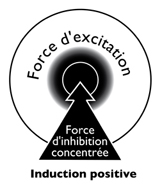
Positive induction: imagine that you are in a movie theater, watching a film that excites you. Your neighbor on the left keeps fidgeting, scratching or clearing his throat. If you don’t want this to completely spoil your pleasure (i.e. the excitement that overwhelms you at the sight of the show passing before your eyes), you will have to “inhibit” this cumbersome neighbor and its nuisances. You will then have carried out a positive induction: your inhibition force, by concentrating on a restricted field (the undesirable element), has allowed your excitation force to make itself available to the dominant external solicitations (the film). Psychologically, positive induction is characterized by the “triumph of self-control, the beauties, the truths and the wonders revealed by a burst of will, a re-composition, a prohibition to prohibit” (J.-P. Nicola).
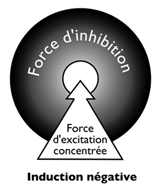
Negative induction: the situation is the same: you are watching an exciting film. But your neighbor on the right, who accompanies you and is dear to your heart, also begins to stir, scratch, clear his throat. Your reactions are then diametrically opposed: you worry about him, wondering if he is not sick, indisposed or anxious. Your natural reaction is to forget, completely inhibit the movie, and focus your arousal intensely on your partner. You then realize a negative induction: your excitation force, by concentrating on a restricted field (the desirable element), has allowed you to give free rein to a force of inhibition which has made you indifferent to the dominant external solicitations (the show). Psychologically, negative induction is characterized by “blindnesses of passion, sacrifices and prohibitions imposed by exclusive goals, stubbornness and obsessions” (J.-P. Nicola).
Induction, positive or negative, therefore bears on the strength, and not on the mobility (speed or slowness) of the processes of excitation or inhibition. For the process of induction to occur, we know thanks to the work of Pavlov that the process of excitation or inhibition must be neither at its minimum (it is then too diffusive), nor at its maximum (it is then too generalized). From the zodiac point of view, the minimum corresponds to the equinoctial signs (minimum difference between excitation and inhibition) and the maximum to the solstitial signs (maximum difference between excitation and inhibition); this strong moment which allows the process of induction is therefore located in the intermediate Signs between the equinoctials and the solstitials.
Spring and fall are the two quadrants of the zodiac where the Excitation Force dominates. Taurus and Scorpio, intermediate signs, are therefore in negative induction : by polarizing their Excitation Force on a restricted field, they are in Inhibition Strength for everything else. This is how the Excitation Force, characteristic of the dominant arc and increasing in duration, is transformed for these two Signs into an Inhibition Force..
Summer and winter are the two quadrants of the zodiac where the Inhibitory Force dominates. Leo and Aquarius, intermediate signs, are therefore in positive induction : by polarizing their Inhibition strength on a restricted field, they are in Excitation Strength for everything else. This is how the Inhibition Force, characteristic of the dominant arc and decreasing in duration, is transformed for these two Signs into the Excitation Force..
The phenomenon of induction is one of the flagrant illustrations of the relative autonomy of the internal zodiac, specific to the human nervous system compared to the external, photoperiodic zodiac, specific to geocentric cycles and rhythms. Indeed, due to negative induction, reflexological Taurus and Scorpio behave as if the dominant arc in these Signs were decreasing, whereas it increases in the astronomical zodiac; conversely, due to positive induction, reflexological Leo and Aquarius behave as if the dominant arc in these Signs were ascending, whereas it is decreasing in the astronomical zodiac.

The study of the nervous system has made it possible to distinguish four types of excitation and four specific types of inhibition:
Expending excitation Strength: spend your energy, act to act, open up spontaneously, express yourself without restraint, get involved immediately. In negative, eliminating inhibition weakness.
Recovering inhibition Strength: rest, recuperate, recharge your batteries, control and control your energy expenditure, limit your investments. In negative, recreating excitation weakness.
Unblocking excitation Strength: to break its limits, to cross its borders, to overthrow the obstacles, to refuse the barriers, to have a liberating burst. In negative, differentiating inhibition weakness.
Shielding inhibition Strength: defend yourself, protect yourself, give yourself limits, refuse overload, do not go beyond your possibilities. In negative, associating excitation weakness.
Associating excitation Strength: broaden one’s frames of reference, make connections, build bridges, assemble, unite, forge relationships. In negative, shielding inhibition weakness.
Differentiating inhibition Strength: select, sort, filter, choose, operate discriminations, differentiations, intensify singularities. In negative, unblocking excitation weakness.
Recreating excitation Strength: see from a new angle, renew the range of possibilities, extract oneself from fatality and disinterest, maintain hope. In negative, recovering inhibition weakness.
Eliminating inhibition Strength: cut contact, withdraw from the environment, remain unmoved, eliminate, give up, draw the curtain, refuse to answer. In negative, expending excitation weakness.
From one type to another, there is relative complexity of excitation or inhibition. Expenditure excitation is the simplest; the release is already less so: the excitation is born of a prior inhibition. Associative excitement, according to which “Birds of a feather flock together”, testifies to an additional graduation in complexity: we deliberately open up to the outside world to weave links. Finally, recreational excitement is certainly the most complex: it requires, in order to express itself, to be able to ward off and control within oneself any temptation to cut off contact.
The same goes for inhibition: recovery, it encourages a passive defense of its backyard. Blocking, it requires, which is already significantly more complex, to know its limits thoroughly. Differential, to be hyper-selective in its refusals and extinctive, to remain rigorously insensitive to the pressures of the outside world.
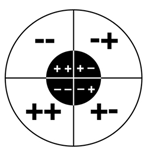 We also know that inhibition is significantly more difficult to implement, and therefore relatively more complex, than excitement: it is easier to give in to temptation than to resist it…
We also know that inhibition is significantly more difficult to implement, and therefore relatively more complex, than excitement: it is easier to give in to temptation than to resist it…
The seasonal cycle is also subject to a graduation reflecting the progressive complexity of the processes of excitation and inhibition. In Spring (code ++), there is growth (+) of excitement (+). In Summer (code − +), there is a decrease (−) in excitation (+). In Autumn (code + −), there is growth (+) of inhibition (−). Finally, in Winter (code − −), decrease (−) of inhibition (−).
The structure of the whole (+ +, − +, + −, − −) illustrates this gradual passage from a simple and maximum excitation (+ +) to a complex and maximum inhibition. Each of these types of excitation or inhibition has therefore been attributed to the seasons and Signs of the zodiac:
There expending excitation Strength fits like a glove to the Signs of Spring, where daytime durations are expanding dynamically (code + +). It will therefore concern the Aries and the Gemini.
The Taurus, Intermediate sign, develops by negative induction (concentration of the excitation spends) the recovering inhibition Strength (to polarize its effervescent energy on a single objective).
There shielding inhibition Strength returns to the Signs of Summer, where the diurnal durations are in recession dynamics (code − +). It therefore concerns the Cancer and the Virgo.
The Leo, Intermediate sign, develops by positive induction (concentration of inhibition) the unblocking excitation Strength (refuse the limitations that prevent the exercise of a liberating will).
There associating excitation Strength is attributed to the Signs of Autumn, where the nocturnal durations are in dynamic expansion (code + −). It concerns the Libra and the Sagittarius.
The Scorpio, Intermediate sign, develops by negative induction the differentiating inhibition Strength (to focus on close and demanding ties and thus refuse others, which are too vague or too flexible).
There eliminating inhibition Strength is specific to the Signs of Winter, where the night durations are in recession dynamics (code − −). It concerns the Capricorn and the Pisces.
The Aquarius, Intermediate sign, develops by positive induction the recreating excitation Strength (refuse the disillusionment or disinterest that hinder the perception of new possibilities).
We have seen that when the human being responds to diurnal or nocturnal processes, increasing or decreasing in duration, his responses are said to be strong, adapted. And that on the contrary, when he responded to zodiacal rhythms lasting less than 12 hours, his responses were said to be weak, unsuitable. To define more precisely what we mean by “adjustment” And “maladjustment”, Go back to this section which discusses this topic in detail.
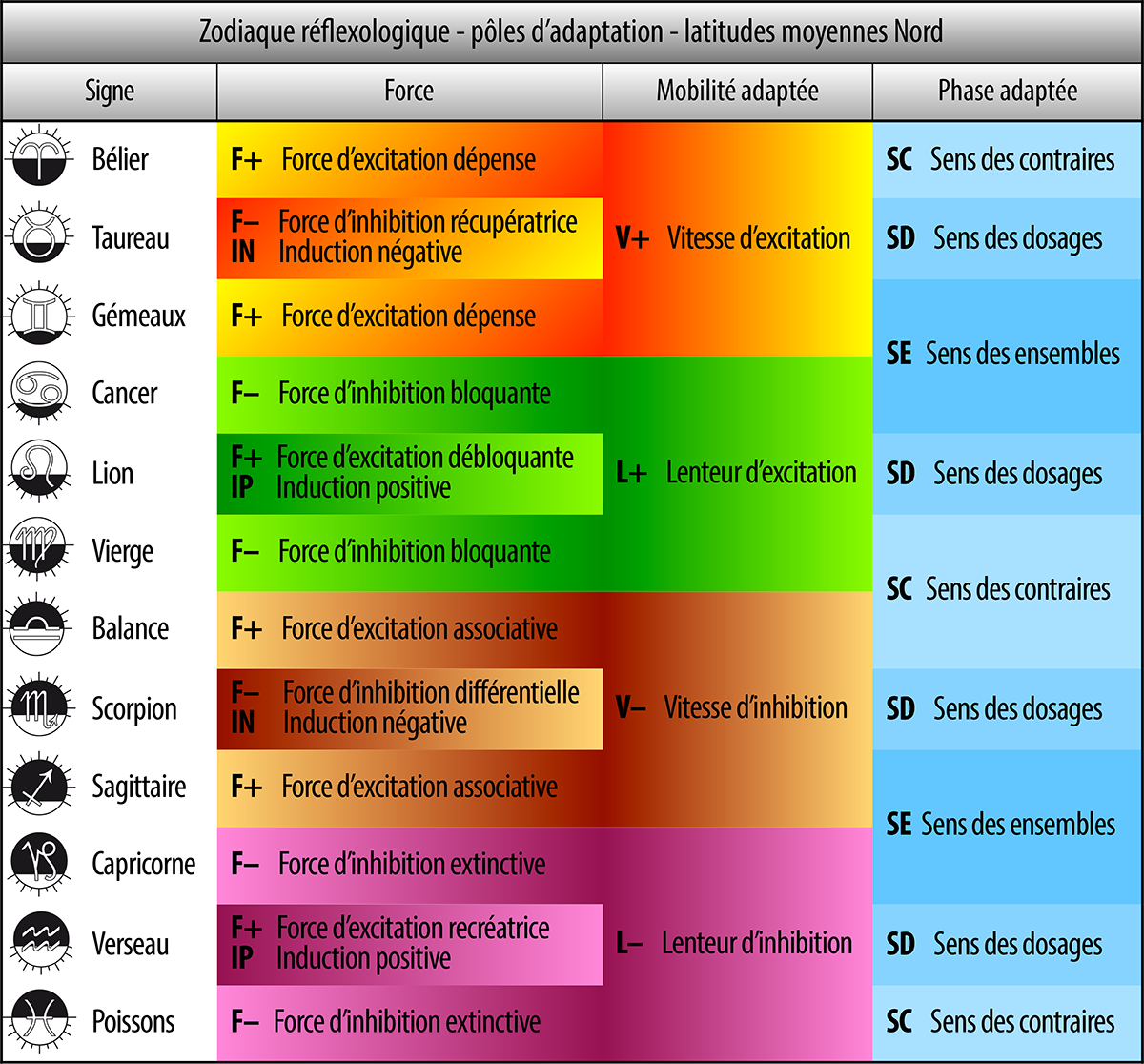
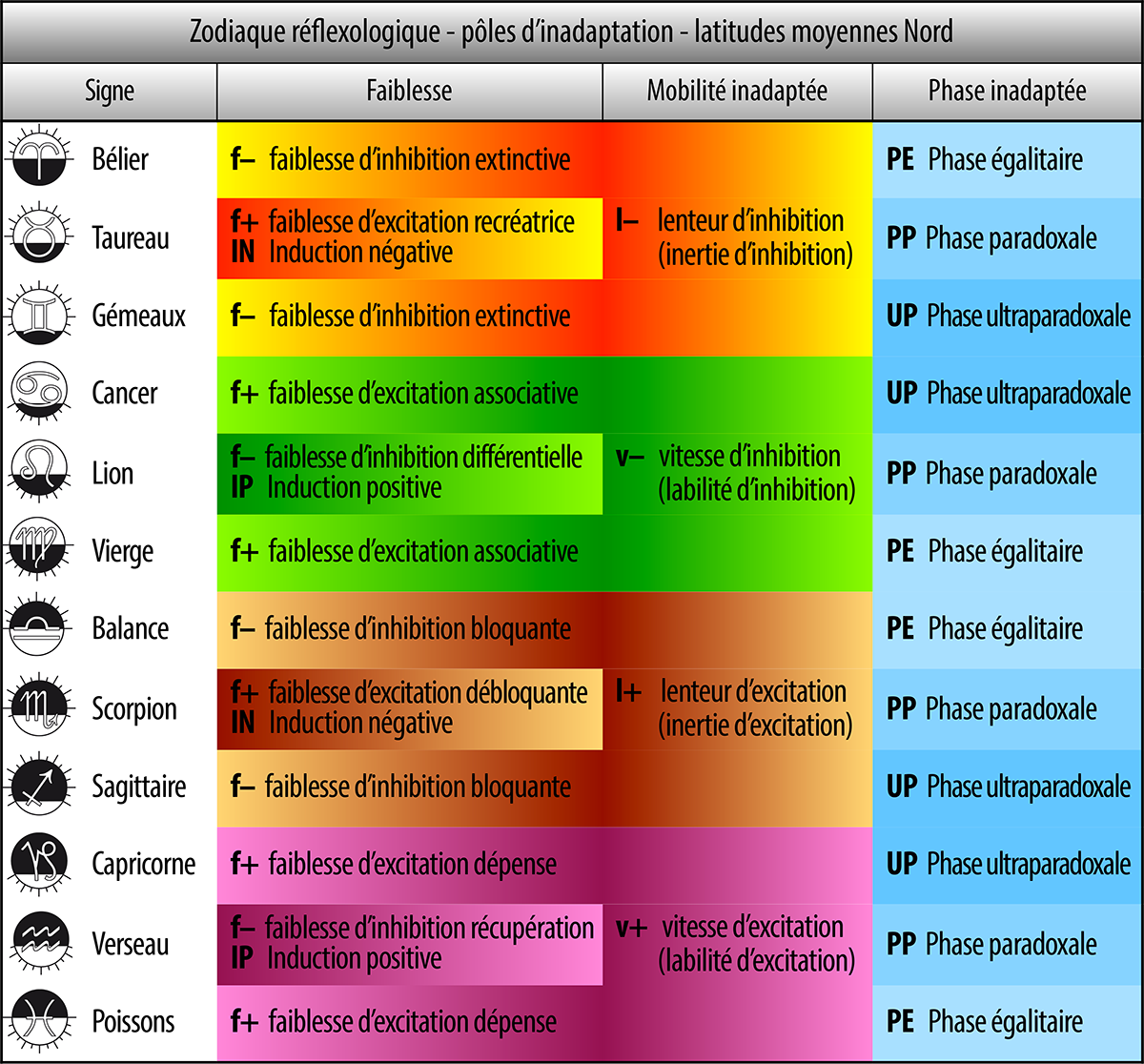
The reflexological formulas of each Sign allow them to be grouped according to their affinities. These families are essential keys for a global interpretation of the theme. Indeed, from a synthetic point of view, each theme is characterized by the relative or absolute predominance of one or more of these families. Rather than interpret “Sign by Sign”, it is infinitely preferable to come up with an overall formula.
Daytime Sextet: Signs of Spring-Summer. The day when the diurnal arc dominates. Predominance of excitement.
Nocturnal Sextet: Signs of Autumn-Winter. The night or the nocturnal arc dominate. Predominance of inhibition.
Opening Sextet (F+): Aries, Gemini, Leo, Libra, Sagittarius, Aquarius. Mobilization, openness to external solicitations. We add or we add ourselves.
Closing sextet (F−): Taurus, Cancer, Virgo, Scorpio, Capricorn, Pisces. Demobilization, closure to external solicitations. We cut off or cut ourselves off.
Quartet of opposites: Signs near the axis of the equinoxes (Aries, Virgo, Libra, Pisces). Sensible equality of the diurnal-nocturnal relationship involving the problematic of choice, of decision, of victory, of the struggle of antagonisms.
Quartet of dosages: Intermediate Signs of Signs (Taurus, Leo, Scorpio, Aquarius). Relative inequality of the diurnal-nocturnal relationship involving the issue of proportion, combination, alloy, power relations, domination.
Quartet of sets: Signs near the axis of the solstices (Gemini, Cancer, Sagittarius, Capricorn). Absolute inequality of diurnal-nocturnal relationships, involving the problematic of synthesis, generalization, totalization or invasion.

Quick excitation trio: spring Signs Aries, Taurus, Gemini. Very high mobility of opening reactions. Slow and inopportune closing reactions.
Slow excitation trio: summer Signs Cancer, Leo, Virgo. Very great perseverance of the opening reactions. Rapid and inopportune closing reactions.
Quick inhibition trio: autumn Signs Libra, Scorpio, Sagittarius. Very high mobility of closure reactions. Slow and inopportune opening reactions.
Slow inhibition trio: winter Signs Capricorn, Aquarius, Pisces. Very great perseverance of closing reactions. Rapid and untimely opening reactions.
They are of two types:
▶ couples axial symmetries : what is strong in Aries (increasing diurnal arc dominant in duration) is weak in Pisces (decreasing nocturnal arc dominant in duration), and vice versa. Each Sign therefore has its opposite-complementary. It is the axis of the equinoxes which determines six zodiacal couples: Aries-Pisces, Taurus-Aquarius, Gemini-Capricorn, Leo-Scorpio, Virgo-Libra. They are characterized by their mirror symmetry: the diurnal-nocturnal relationships are exactly the opposite inside each of these pairs.
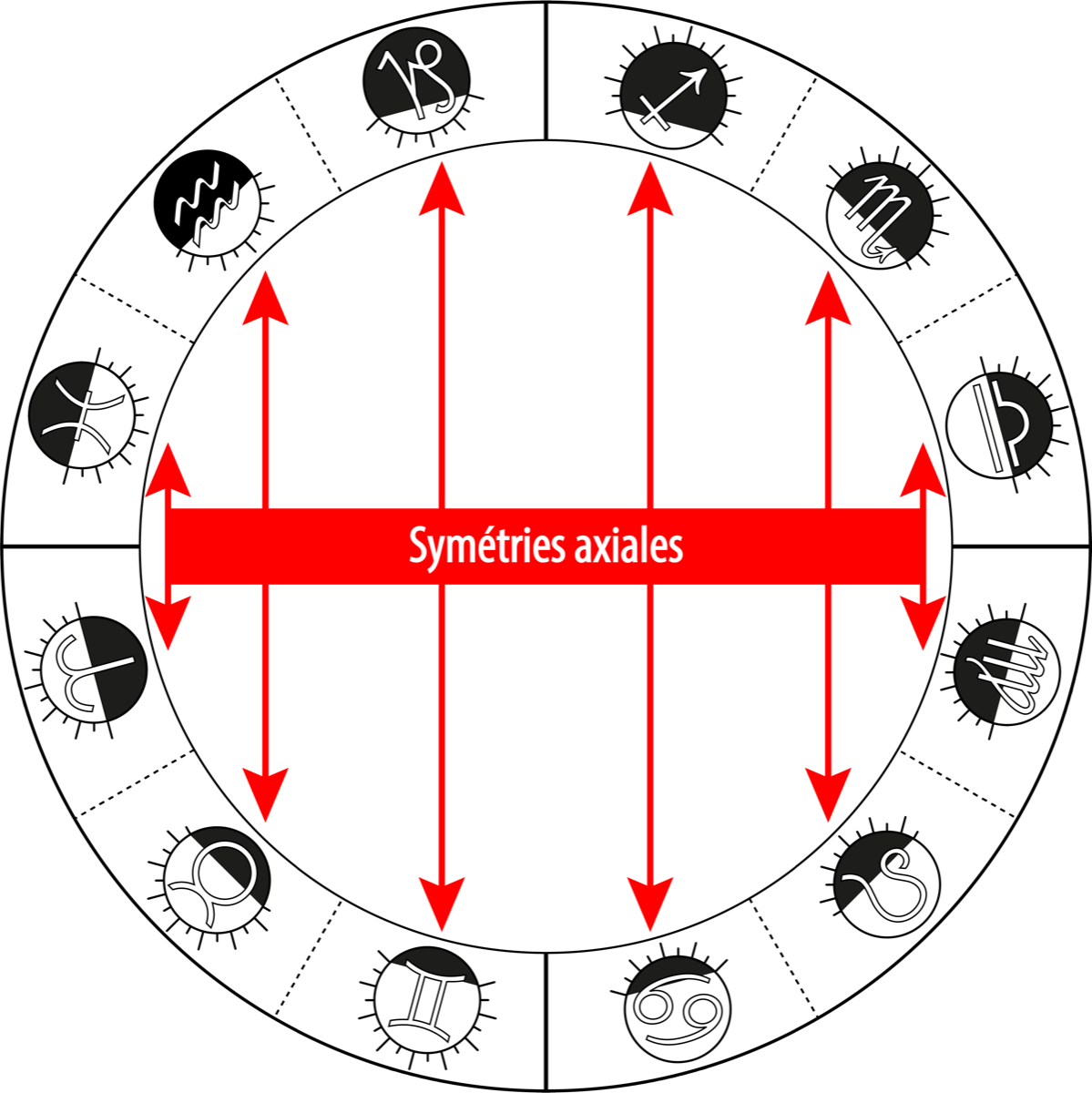
These zodiac couples are of extreme importance. Thus, in a theme dominated, for example, by Sagittarius, it is in our interest to consult the strength of Cancer. If Cancer is weak or is not occupied by any planet, there is a high probability that Sagittarius is exaggerating in its “lack of blocking inhibition”, his refusal of protective limits.
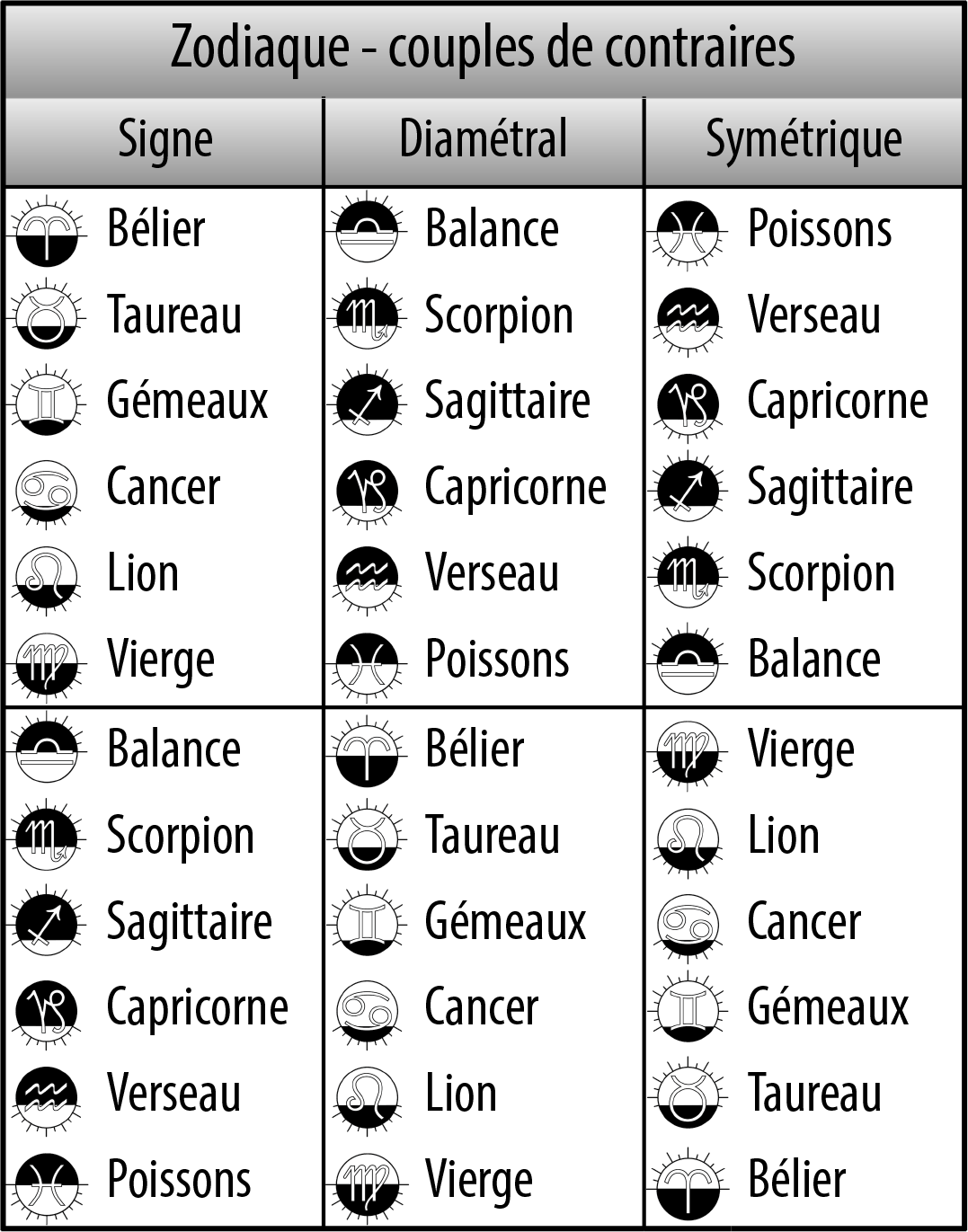
The same is true when comparing two or more themes (synastries): the relationship between two beings, one of which is strongly marked by Taurus, and the other by Aquarius, is likely to be extremely complex and difficult: in pairs, they form a whole (complementarity), each compensating for the shortcomings and weaknesses of the other, but their inverse zodiac formulas will most of the time encourage them to oppose each other on everything. The table opposite summarizes the symmetrical opposites and the diametrical opposites for each Sign.
▶ pairs of central oppositions: Aries-Libra, Taurus-Scorpio, Gemini-Sagittarius, Cancer-Capricorn, Leo-Aquarius, Virgo-Pisces. Apparently opposed, the two Signs that make up each of them actually have many points in common.
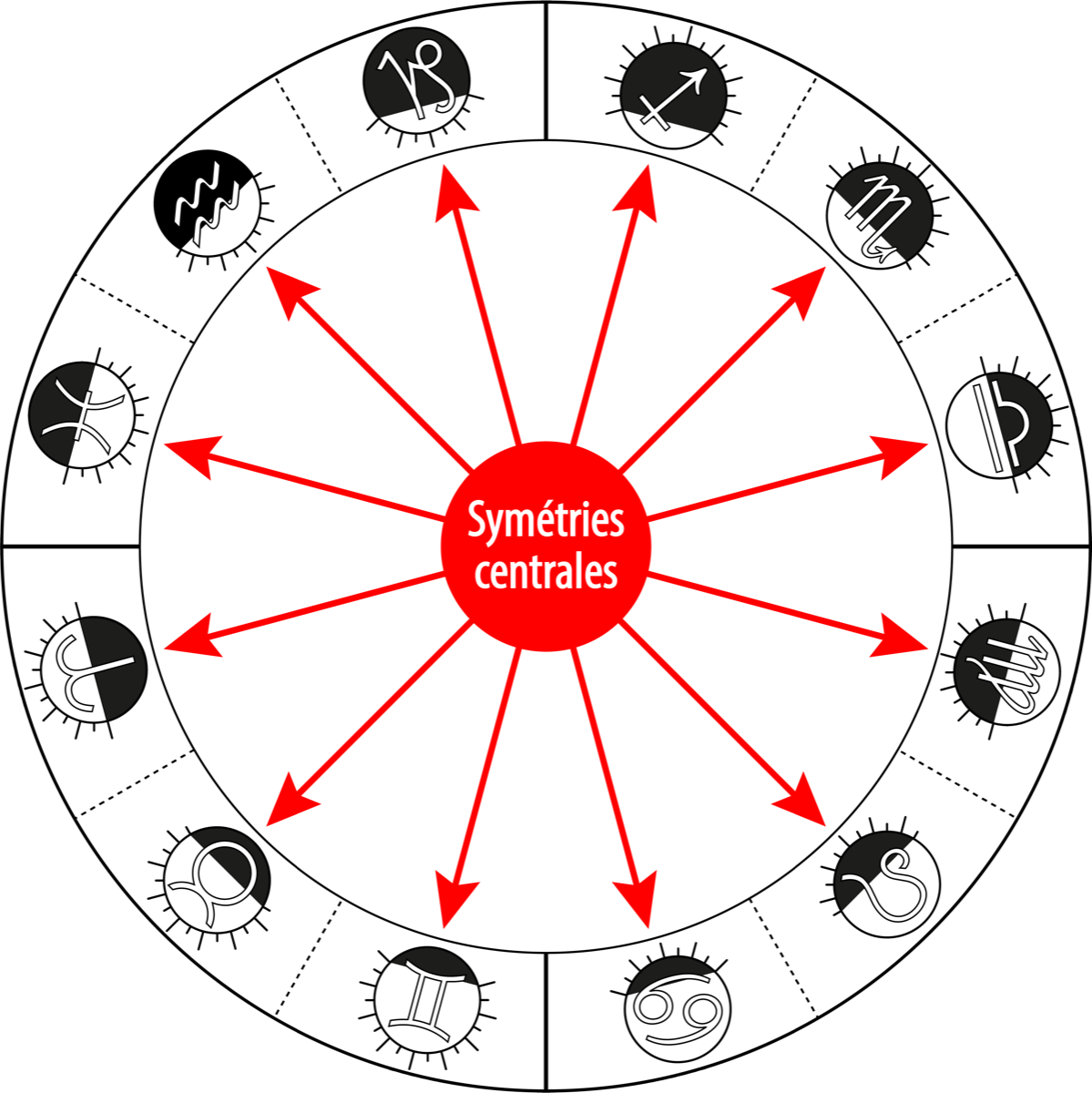
Take the example of the couple Aries-Libra: in both cases, the dominant arc is increasing and the diurnal-nocturnal durations substantially equal. What differentiates them is their membership of the diurnal (Aries) and nocturnal (Libra) sextet. Thus Libra, far from being the perfect antithesis of Aries (it is Pisces who has this function), is rather a “Aries of the Night”. Like an Aries, she soars into the night of collective values (Libra is the first Sign of the nocturnal sextet), impulses a dynamic that leads her to abandon any individual isolate (the previous Sign, Virgo, which is its radical opposite, is the last of the nocturnal sextet).
A Sign which no planet occupies, as we have seen, is only an astronomical abstraction. A Aries ‘r’ is quite different from Aries ‘t’. A being strongly marked by the Taurus where an opposition dominates Venus-Pluto will have little to do with another, equally marked by Taurus, but whose dominant planetary configuration is a conjunction Jupiter-Uranus. This is one of the reasons, specifically astrological, which explains why all people born under the same Sign rarely look alike. The ideal would be to interpret the Signs only according to the planets which are there. You will find in this section interpretations of planetary trios in Signs. You can also find in this other section interpretations of the Planets in Signs, but beware: they are taken from those of the R.E.T. planetary trios, and therefore do not correspond to real interpretations of the Planets in Signs taken in isolation (this work remains to be done).
To clear up a little the complexity of the interpretation of the planets in Signs, in which it is very easy to get lost and to make misinterpretations, I offer you some laws, leads and recommendations.
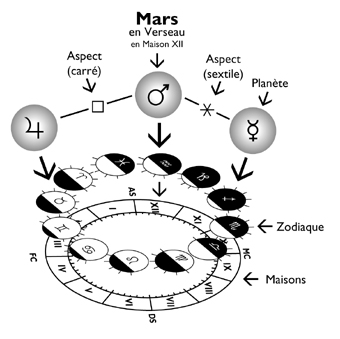 The interpretation of a Theme is based on the hierarchy of the following elements: 1) Planets; 2) Signs; 3) Houses (see diagram opposite).
The interpretation of a Theme is based on the hierarchy of the following elements: 1) Planets; 2) Signs; 3) Houses (see diagram opposite).
A planetary function is expressed as such in the Sign (geocentric rhythm) where it is at a given moment in its cycle. There can therefore be no contradiction in the star-sign relationship. No planet is “GOOD” or “evil” in a Sign: it testifies to a psychological function which is what it is… in a certain way, which depends on the Sign.
Example: a March in Aries (Sign of excitement) encourages you to live your penchant for concrete activity, struggles and confrontations (Mars) in a particularly lively, impulsive, reactive, immediate, clear-cut way (Aries). A March in Cancer (Sign of inhibition) encourages you to live your penchant for concrete activity, struggles and confrontations (Mars) in a particularly persevering, cumulative, organized way, protecting yourself from anything that might hinder expression Marsian function (Cancer). The blocking inhibition of Cancer does not inhibit Mars, it is Mars who uses the Cancerian inhibition to tenaciously refuse all external incitements to letting go, abandonment, passivity, etc. The misinterpretation, very widespread in astrology, consists in believing that the Sign (Cancer) will stifle or hinder (blockage, slowness), the expression of the planet (Mars).
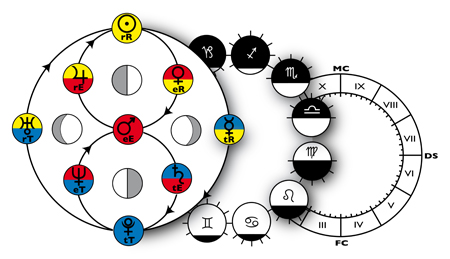
Likewise, a Venus-Capricorn is not “extinguished” by the extinctive inhibition characteristic of this Sign. It is even exactly the opposite: the vocation of extinctive inhibition being to eliminate, proscribe, definitively reject all that is not the absolute to which one devotes oneself, the absolute is in this case Venusian: dictatorship absolute of affects and emotions which, disconnected from the atmosphere and indifferent to external solicitations, imperiously demand to be lived in oneself.
And since we are talking about Venus, a planetary function belonging to the ‘e’ family of the R.E.T., let’s talk, still about the star-Sign relationship, the “‘little e’ with stereotyped and ritual emotions (Sl+), others who, although touched, do not cry easily (Sl−), others who have it fleeting and unpredictable (Q+) or opportunely and circumstantial (Q−)” (J-.P. Nicola).
Each planet or planetary family having its own R.E.T. and each Sign its reflexological formula, it becomes possible to pass to a very high level of abstraction by associating these formulas to interpret the zodiac-planetary interactions.
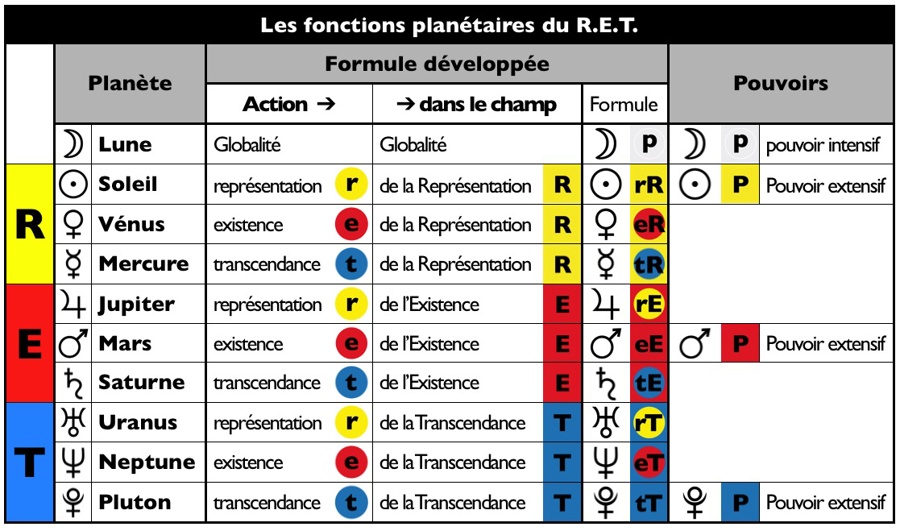
These abstract formulas may seem disembodied, and yet they are the invisible and structural skeleton that animates the flesh of words and images associated with the planets and the Signs through mythologies (gods & goddesses of the Greco-Roman pantheons for the planets) and realistic or fabulous bestiaries (most of the Signs of the zodiac) which gave them substance in the form of thousand-year-old symbols … which could very well be replaced by others. As a reminder, the table opposite summarizes the R.E.T. planets.
Mars in Aries
To understand how a Mars in Aries for example, one can decolonize one’s imagination from references to the god of war and the horned animal belonging to the capridae subfamily, and directly interpret its adapted or unadapted zodiaco-planetary formula:
Adjusted formula: “existence of Existence” in “expending excitation Strength, excitation Quickness and sense of Opposites” for the forces of Mars in Aries.
Maladjusted formula: “extensive non-Representation” in “eliminating inhibition weakness, excitation lability and egalitarian phase” for the weakness of the “Big R” of Mars in Aries.
Venus in Capricorn
For Venus in Capricorn, we can also dispense with references to the goddess of love and to a fabulous animal whose body is that of a fish and whose head that of an Aries and interpret the following zodiaco-planetary formulas:
Adjusted formula: “existence of the Representation” in “eliminating inhibition Strength, inhibition Slowness and sense of Syntheses” for the forces of Venus in Capricorn.
Maladjusted formula: “intensive non-transcendence” in “expending excitation weakness, inhibition inertia and ultraparadoxical phase” for the weakness of the “Little t” of Venus in Capricorn.
There is enough to imagine a thousand portraits. At first, this kind of exercise is not easy to do. But we get used to it, and we end up realizing that the reality we can observe and imagine is much richer than all the pantheons and mythological bestiaries… In any case, this approach makes it possible to rationalize the Planet-Sign, which is impossible for purely symbolist astrology.
It also helps to understand that the “excitation Quickness”, for example, is declined differently for fast planets than for slow ones. A “plutonian” (248 years of sidereal revolution for Pluto) has a different perception and conception of speed and excitement than a “lunar” (28 days of sidereal revolution for the Moon). This is how the Signs must necessarily be interpreted according to the planets, and not the other way around, which is an absolute contradiction.
The astro-psychological portraits that are made of the different Signs and planets can sometimes suggest that there are similarities or affinities between certain Signs and certain planets. It is in fact, at bottom, a pure effect of vocabulary. We have so few words and they are so reductive (level “Representation”), to describe the sensitive realities (level “Existence”) or invisible (level “Transcendence”), that we are often obliged to use the same to describe, in the categories of common language, dissimilar, even contradictory phenomena.
Take for example the word “proud”. It will be used to describe and classify a multitude of different attitudes. It will be said, and with some reason, of a haughty individual, imbued with his person and his merits, that he is “proud”. Certainly. But another, expressing his shyness or his reserve by an attitude of cold distance, will also see himself decked out with the same name of bird, like yet another, whose refractory temperament and lofty view prohibit him from playing the game of propriety. specific to a given social environment.
Words serve to describe things, but they are not things, and often even betray them by naming them. This site is no exception to this curse of language. This curse not being absolute, we can correct its perverse effects: do not let yourself be misled by the sometimes identical vocabulary and figures of speech used to describe two different realities: that of the zodiac, and that of the planets.
There is not in itself, and despite these linguistic appearances, a star-Sign affinity. Nor can there be any non-affinity or contradiction between the two. Even if you find that the description of such planetary function sometimes strongly resembles that of such zodiacal process, the orders of magnitude are not the same.
This is the reason why conditionalist astrology, following the great astronomer-astrologer Kepler, abandoned the theory of “planetary masters” that each planet “would govern” one or more Signs of the zodiac and would be in “debility” in diametrically opposed Signs. This theory of “planetary masters” is also formally contradicted by practice and observation.
A planet expresses in any Sign the riches and deficiencies proper to its nature and its function. In itself, its presence in one Sign rather than another can in no way prejudge its strengths or weaknesses, its adapted or unsuitable tendencies.
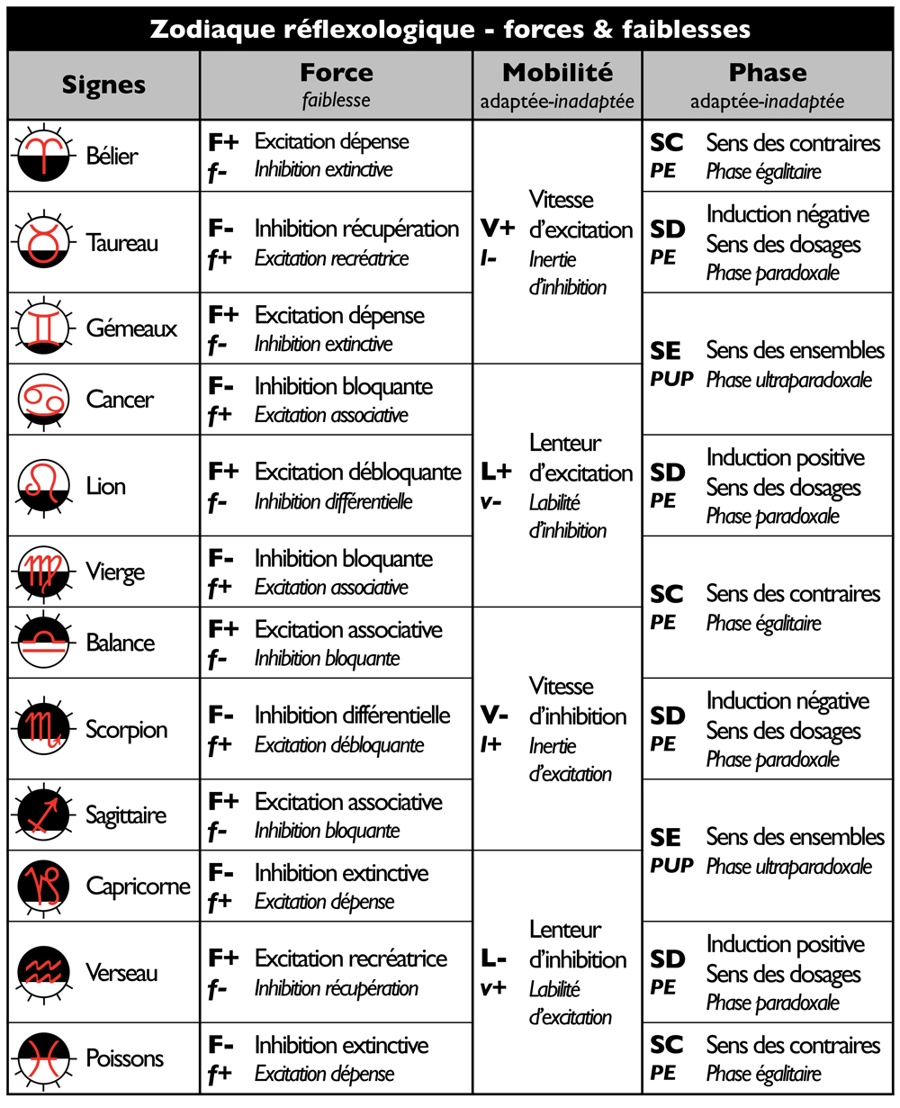 The horoscope not being the Subject, a natal chart will never tell you if you are dealing with a rich or poor, adapted or unsuitable individuality: think that a long period of unemployment is enough to make a suitable a misfit, or a revolution so that the hitherto minority ideas of a misfit suddenly become dominant, propelling him once again into the camp of the fit!
The horoscope not being the Subject, a natal chart will never tell you if you are dealing with a rich or poor, adapted or unsuitable individuality: think that a long period of unemployment is enough to make a suitable a misfit, or a revolution so that the hitherto minority ideas of a misfit suddenly become dominant, propelling him once again into the camp of the fit!
Concerning the planetary functions, we can however speculate that a theme where the dissonant aspects are dominant and majority risks inducing higher probabilities of inappropriate behavior. Similarly, an individual in whom the level dominates “intensive r” (Sun, Jupiter, Uranus) risks being unsuitable when it comes to expressing his level “intensive t” (Mercury, Saturn, Pluto), and all the more so if this level is very low for him. Concerning the Signs of the zodiac, we therefore assimilate the diurnal or nocturnal poles of longer duration (greater than 12 h) to adaptive tendencies (Strengths) and the poles of less duration (less than 12 h) to unsuitable tendencies (lacks, weaknesses).
The Signs derive their reality, as we have seen, only from the planets which are there at a given moment. From where this relative law: in a chart, the Signs which are occupied by planets receiving a maximum of dissonant aspects can a priori be interpreted according to their weaknesses (maladjustment).
Likewise, the Signs which are occupied by planets receiving a maximum of consonant aspects can be interpreted in terms of their strengths (adaptation). If consonances and dissonances are substantially equal, one must imagine a “mixing” strengths and weaknesses, adaptation or inadequacy depending on the planets present in the Signs.
… not forgetting that it is not about being that is adapted or unadapted in itself, but that one is always adapted or unsuited to an environment, and that this environment is absolutely not inscribed in the theme of birth.
▶ The twelve zodiac Signs
▶ Mythologie du zodiaque
▶ Les Signes du zodiaque de « La Condition solaire »
▶ Your zodiac Sign
▶ Signs and seasons
▶ Planetary trios in Signs
▶ The zodiac and the precession of the equinoxes
▶ The astronomical reality of the zodiac
▶ The human reflexology zodiac
▶ Autour du zodiaque : de l’eau dans un Signe de Feu ?
▶ Zodiaque et sphère locale
▶ Mythologie du zodiaque
▶ Zodiaque et formes de l’inhibition
▶ Change-t-on de caractère en changeant de Signe solaire ?
▶ Énergie-Espace-Temps-Structure et zodiaque
▶ Genèse du zodiaque conditionaliste
▶ L’horloge photopériodique du genou
▶ Signe solaire et Signe Ascendant
▶ Astrologie, adaptation & inadaptation
▶ Les rythmes du zodiaque
▶ Cosmographie simplifiée du système solaire
▶ Thème de domitude et hiérarchisation planétaire
▶ Effets et contre-effets des images et représentations sur les faits et les idées
▶ Le taijitu dans le système solaire
▶ Zodiaque, planètes et typologie jungienne
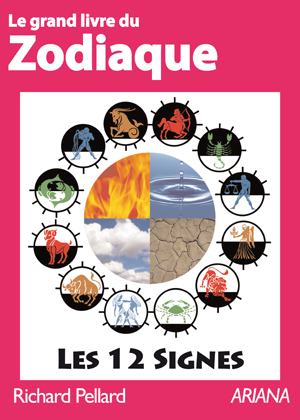
Le grand livre du zodiaque
par
180 pages. Illustrations en couleur.
Ce livre présente et explique les trois zodiaques : celui du décor des constellations, celui de l’astrologie traditionnelle basé sur les Quatre Éléments symboliques (Feu, Terre, Air & Eau) et celui de l’astrologie naturelle basé sur les phénomènes astronomiques objectifs.
Téléchargez-le dès maintenant dans notre boutique